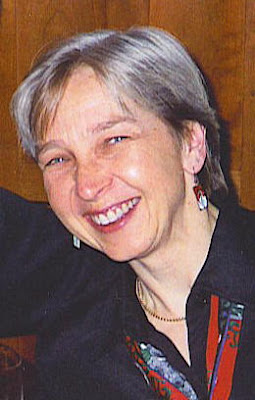A new study – U.S. Classical Music Public Radio Workforce
– is providing a fresh portrait of the people who make classical music, as heard on
public radio, possible. Classical Music Rising (CMR), an initiative sponsored by
Station Resource Group (SRG), is releasing the comprehensive fact-fining study
today. The report, survey details and background data are available here.
Classical Music Rising is supported by the Andrew W. Mellon
Foundation, and by participating station partners.
Takeaways from the
study show the reality of classical music on public radio in America today. They include:
• An aging
workforce with very few new job vacancies now or in the foreseeable future.
• A non‐diverse workforce with very few
opportunities to hire new diverse talent now and
in the foreseeable future.
• The need for
skills training related to on‐air presentation, digital production and social media, and fund‐raising to effectively engage new audiences
and members.
• The lack of a
younger ‘bench’ to take classical forward into the future combined with worries
that classical music media is not an attractive career choice for younger
talent.
• The ability of
hosts and staff to be ‘local’ and ‘engaged’ with listeners in a climate of
tight resources.
• Budgets and human
resources are being stretched to thin.
• Substantial
concerns at mixed‐format
stations about the future of the classical format
on these stations.
The study was
conducted In November and December 2016 and January 2017 by a Working Group
assembled by SRG, the CMR steering committee and Wende Persons, Managing Director of CMR. Judy McAlpine of McAlpine
Creative Consulting led the group.
Other public radio classical execs participating
were Frank Dominguez, GM and Content Director at WDAV Charlotte; José Fajardo,
President, President of Hawaii Public Radio; Daniel Gilliam, Director of Radio
at Louisville Public Media;
Ruth Phinney, PD of WXXI FM; and, Rochester
; Maggie
Stapleton, Assistant Station Manager at KING in Seattle.
The scope of the
research was unprecedented. Respondents were sorted into three groups: All-Classical
stations, Mixed format stations and four national organizations that provide
programming and guidance to the stations.
1.) ALL-CLASSICAL STATIONS
In this group there
are 51 in-tab stations, such as WQXR, KUSC and KING. The study found that the
total number of “content-centered” employees at these stations is 483 people. There
are an additional 430 support people.
2.) MIXED FORMAT STATIONS
In this group there
are 30 in-tab stations, such as KPBS, WSHU and WFIU. The study found that the
total number of “content-centered” employees at these stations is 102 people.
There are an additional 60 support people.
3.) NATIONAL ORGANIZATIONS
All four national organizations
participated: American Public Media (APM), National Public Radio (NPR), Public
Radio International (PRI) and the WFMT Radio Network. The total number of “content-centered”
employees at these stations is 68 people. There are an additional 53 support
people.
The total number of
people working in the public radio classical ecosystem is well over a thousand
talent and dedicated pros.
PROPOSED SOLUTIONS
The Working Group
that conducted the study proposed three major recommendations:
• Create training
modules for on‐air
presentation skills and digital skills for hosts/producers.
• Create a
fellowship/internship program to develop new talent at stations with potential
to increase diversity of staff, add to diversity of ideas and strengthen local
connection.
• Partner with
organizations such as AIR to increase diversity and skills related to classical
content, particularly digital content.
KEN SAYS: This is an important document, destined for the time capsule. It provides the clearest look I've seen of the human
infrastructure of the people behind classical music on public radio and companion media.
I believe that
classical music on public radio is at tipping point. I wrote about the tipping
point for commercial classical stations in August, 2016 [link].
I strongly recommend reading the entire report http://www.srg.org/classical/.
We will high-light
various factoids in coming posts.
Personally, I think
noncommercial classical radio and companion media needs a national voice - a human being who is not afraid of speaking frankly about the role of music in our society. Listeners need to notice us and consider us a voice of reason. They will support action.



No comments:
Post a Comment